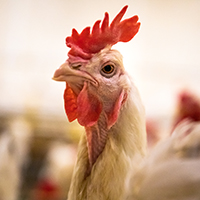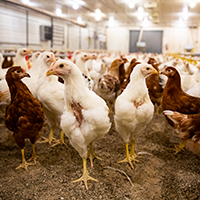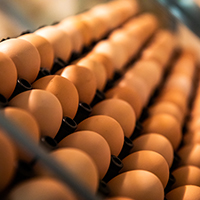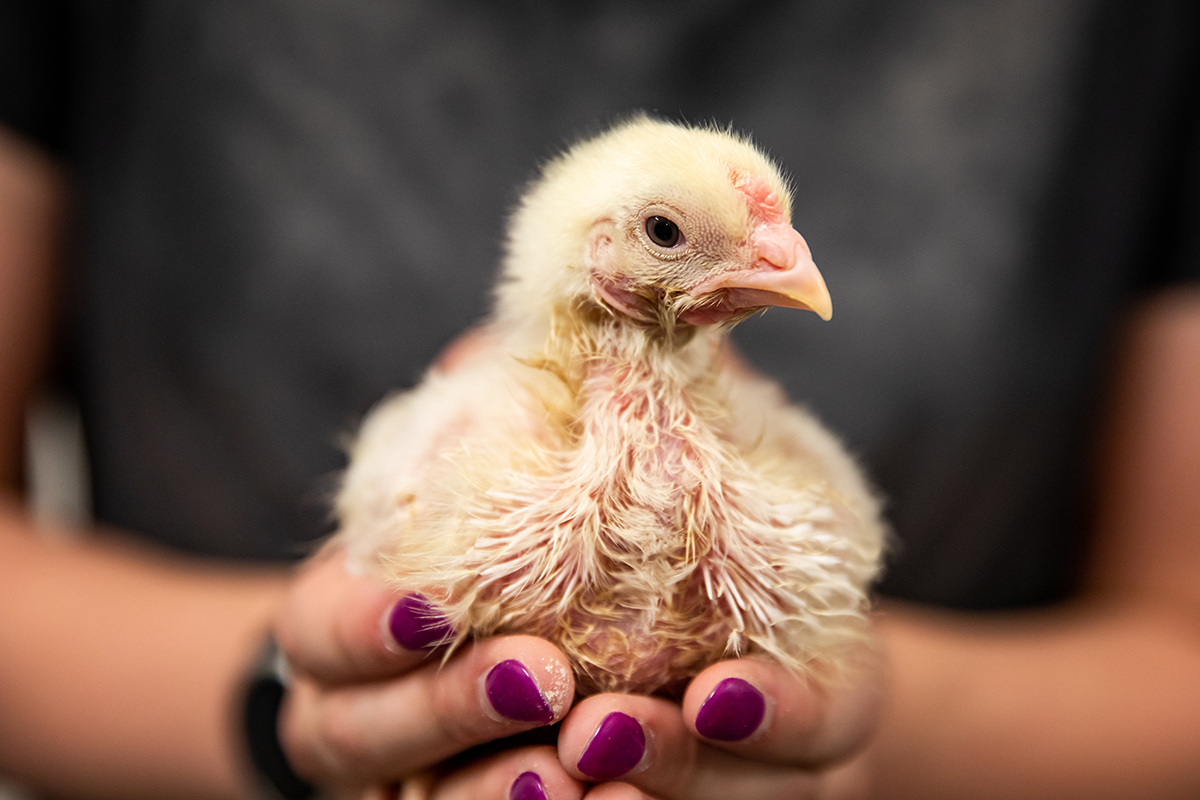



Learning from chickens at the University of Illinois Poultry Research Farm
A tour reveals chickens are daring, pragmatic and curious about humansThe first thing I notice when we step through white double doors of the growers’ house is that every one of the 1,200 or so chickens in this enormous room has stopped whatever it was doing to stare at us. A few of the birds step closer, peering at our legs as if they want to peck our shoes. But they don’t. They’re just curious. Chickens, I realize, are gawkers.
This is one of six massive buildings that house the University of Illinois Urbana-Champaign Poultry Research Farm, a research and training facility that captures every life stage of these birds, from egg-laying to hatching to adulthood. The facility teaches students about chicken care and breeding, and provides eggs and birds to researchers here and across the country.

Most of the birds here are white leghorns, but there also are pure Columbian chickens and brown egg-layers of a commercial breed known as Hy-Line. These birds are 11 weeks old, the bird equivalent of human teenagers, says Sarah Womack, a graduate student in animal sciences who also manages this facility and is guiding us around.
“They’re going through a bit of an ugly phase right now,” they say. “They’re molting, working on their adult feathers.”
Many of the chickens have bare spots on their breasts. Others are further along on the transition to adult plumage. Once they mature, Columbian chickens sport lovely tufts of black feathers on their tails that contrast nicely with their otherwise white plumage, Womack says.

The birds in this room will soon become part of the facility’s “breeder flock.” They will be used “for teaching and a little bit of research as well,” Womack says.
Students in animal sciences are learning how to pick up and hold the birds; collect, grade and handle the eggs; observe hatching; and take care of the chicks. When older chickens die, the students conduct necropsies – the animal equivalent of autopsies – to learn about anatomy.
Womack is working on a master’s degree in animal sciences as part of the Research Professional Program, a five-year plan that allows students to work full time for the department while also pursuing a master’s degree part-time.
“This way, I get real hands-on experience,” they say. “I’ll come out of it with several years of management experience. And I get a real salary, which is nice.”
We leave the first facility and walk to an identical building. Once we’re inside, Womack opens a pair of double doors along a hallway with the number 3 tacked overhead. This space is the size of a large bedroom, and it is full of more teenage Columbian roosters, each of which has staked out its little corner of territory. One rooster perches above the fray by sitting atop a water line that swings back and forth a few inches above the floor. The birds peck at little nipples on the underside of the water lines to slake their thirst.
The roosters are clucking and humming. “That’s kind of their normal walking-around happy noise,” Womack says. Periodically, a couple of roosters will crow. Some are better at it than others.
“Their teenager voices will crack,” Womack says. “They’re about 11 weeks old, the equivalent of 16-year-old boys.”
The next room is for the breeding birds, male and female chickens together. We can hear the roosters crowing before we get inside. We stand in a narrow corridor between two room-sized caged flocks. My first thought is that the Hy-Line roosters are bigger than any chicken I’ve ever seen. Each is massive – about the size of a beachball. Womack opens a gate to one of the enclosures to let Public Affairs senior photographer Michelle Hassel get a clearer view. Immediately, one of the big brown males starts scratching aggressively in the dust right near Hassel’s feet.
Womack says he’s trying to intimidate us – and it’s working. A cloud of dust envelopes him and other nearby chickens as Hassel bravely crouches closer to take a few pictures.
Womack says there are several chicken breeds here: the pure Columbians; New Hampshire reds, which are a reddish brown; and two varieties of leghorns.
The roosters are crowing nonstop. One stands right beside me on a tall bench screeching directly into my ear, as if it thinks I’m hard of hearing.
I look up and see that Womack is holding a hen in their arms.
“This is Little Kimi,” they say. “She escapes every day. She knows how to get out and she likes to go over to the other pen even though this is where she lives.”
(I later learn that Little Kimi is named after a Rugrats character who tries to escape from preschool.)

Womack says Little Kimi (the chicken) is angry because she’s being returned to her proper enclosure. She raises her comb and shakes her tiny head in a huff.

On our tour of the facility, we also see eggs neatly stacked in an incubator, young chicks waiting to graduate to their next developmental stage, and a room full of egg-laying hens in cages that reminds me of videos I’ve seen of egg facilities.
Each nest box holds seven hens and is roughly 2 feet by 2 feet, Womack tells me.
“A lot of research has been done into the number of square inches, the floorspace, the lighting, the feeder space, the number of water nipples that are ideal for the laying hens,” they say. “They’ve looked at things like cortisol levels in the birds, which directly correlates to stress. And they have determined that this size cage, this number of birds per cage, everything you see here provides the lowest stress and the most contentment for the birds.”

Other research – also conducted in facilities like this one – focuses on how the birds’ diet affects their health and the quality of their eggs.
This is the quietest of the rooms we’ve visited so far. I look closely at the hens and they peer back at me, heads sticking out of their nest boxes – unless I get too close, and then they pull their heads back into their cages. It’s not easy to read expressions on a chicken’s face, but the sounds they make are a clue to their state of mind, Womack says. These birds look calm, and they’re making noises that sound like humming.

“That is a sound of a contented chicken,” Womack says. “They feel safe. They feel comfortable. They’re with their friends and they’re happy with their friends.”
We’re here too late to see the peak of egg-laying, which occurs early in the morning. Womack says the hens “sing” when they lay an egg, clucking very loudly to let the others know it’s safe to lay. It kind of also sounds like bragging.

The poultry unit supports many aspects of learning and research, from agricultural and veterinary students hoping to work in the industry or with small-scale poultry farms, to those focused on animal diets, productivity and welfare. It provides eggs for other facilities involved in vaccine research and other types of studies.
The job brings Womack another step closer to a career in agriculture. It’s a job that offers management experience, insight into chicken behavior and biology, daily challenges and amusement.








